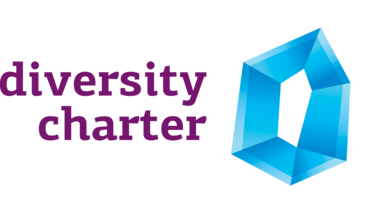Equal treatment
It is important to the university to ensure the wellbeing of its members and guarantee that they have good working and learning conditions and are protected from unfair and unequal treatment.
Acknowledging diversity, respecting the rights of the university members and promoting equal treatment contributes to achieving the university’s strategic goals, supports an encouraging learning and work environment and values employees and students.
What is Equal Treatment?
What should you do if you feel bullied or treated unequally?
How to deal with an incident of bullying or discrimination?
The guidelines for equal treament and support persons
The guidelines for equal treatment aim to provide an overview of the topics related to equal treatment and workplace bullying, give employees and students clear instructions on how to inform about a violation of the principles of equal treatment and describe the procedure of resolving discrimination and bullying cases.
If a member of the university suspects that they or their colleague or fellow student is being treated unequally or bullied, they can get first-level advice and support from an equal treatment support person.
Filing a complaint
For an official resolution of a discrimination or bullying case in the learning or work environment, fill in the complaint form and send it to the academic secretary by email (tonis.karki@ut.ee) or on paper (to Ülikooli 18, Tartu). The academic secretary Tõnis Karki will seek a solution to your problem independently or by involving an impartial committee. The existence of evidence is also important in the investigation of a complaint, so please submit any relevant evidence with the complaint.
Discrimination
Discrimination means treating someone worse or better than someone else. Identifying discrimination does not require proving the discriminator’s aim or will to discriminate against someone.
Direct discrimination occurs when a person is treated less favourably than another in a comparable situation on the grounds of their sex, nationality, race, colour, religion or other beliefs, age, disability or sexual orientation.
Direct discrimination also includes harassment, which occurs when unwanted or unpleasant behaviour or act takes place with the purpose or effect of violating the person’s dignity and creating an intimidating, hostile, degrading, humiliating or offensive atmosphere, which may also impact the work or learning environment.
Indirect discrimination occurs when an apparently neutral provision, criterion, practice or activity puts persons at a particular disadvantage compared with other persons on the grounds of any characteristic. It is not indirect discrimination if that provision, criterion, practice or activity is objectively justified by a legitimate aim and the means of achieving that aim are appropriate and necessary.
Discrimination also occurs in a situation where one person is treated less favourably than others or experiences negative consequences because they have stood for their rights and filed a discrimination complaint or supported a person who has filed such a complaint.
Discrimination includes giving discriminatory orders or instructions. The person who gave the discriminatory order or instruction is the discriminator.
If improper behaviour is not directly connected to a characteristic listed in the Equal Treatment Act, it may be a case of bullying. Bullying in the work or learning environment is understood as repeated, long-term and ungrounded hostile and unethical behaviour towards an employee or a student. Such behaviour puts them in a vulnerable and defenceless position and may endanger their health.
Gender equality plan
At the end of 2021, university adopted a gender equality plan, which is the first bigger step towards a wider and more systematic approach to gender equality.
The university’s gender equality plan sets four goals, the implementation and progress of which will be monitored in the years 2022–2025:
- to enhance people’s awareness of gender equality and show its connections with the university’s main activities, i.e. teaching and studies, research and service to society;
- to promote gender equality among staff;
- to involve, in a balanced way, employees of both genders in governing bodies and decision-making;
- to promote an organisational culture that values the equal treatment of all members, incl. improve the members’ awareness of equal treatment and sexual harrassment, and focus on prevention and solving of issues.
Diverse workplace label “Respecting differences”

In autumn 2022, the Estonian Human Rights Centre and the Ministry of Social Affairs presented the diverse workplace label “Respecting differences” to the University of Tartu, recognising employers who value equal treatment and an inclusive organisational culture and whose work in diversity management sets an example to others. It demonstrates the organisation’s commitment to supporting diversity and thereby creating a better working environment and society. The label is valid for two years.

Diversity Charter
In April 2022, the university also signed the Diversity Charter coordinated by the Estonian Human Rights Centre, committing to promote diversity and equal opportunities among its employees, clients and partners. The text of the charter is available on the home page of the Estonian Human Rights Centre.
The enterprises and organisations that have signed the charter form a community to share best practices and promote diversity and equal treatment in society. The community also offers its members free opportunities to participate in training courses, seminars and workshops, and to network with the best experts in their field.


